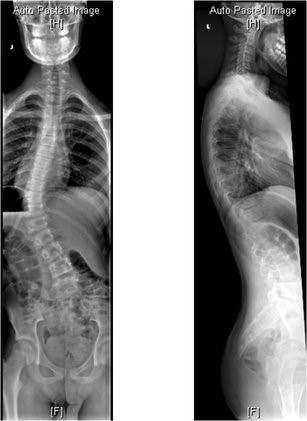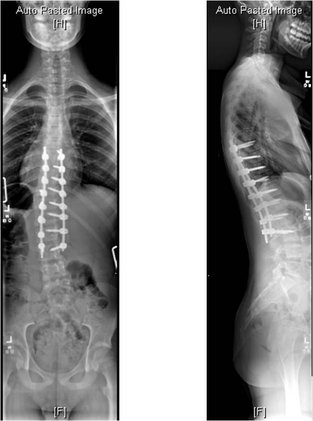Posterior Spinal Instrumented Fusion for AIS is recommended when the curvature of the spine exceeds a certain magnitude (40-45 degrees) in adolescent idiopathic scoliosis (AIS). Surgical treatment is often recommended either to stop the curve from getting worse and/or to correct the spinal deformity using modern surgical techniques and implants.
Dr. Cho performs the surgery from the back of the spine (posterior approach) using appropriate implants (e.g., screws and rods) to straighten the curve and to immobilize the spinal segments as they heal and fuse together in a corrected position.
For the fusion part of the procedure, Dr. Cho uses local spinal bone from the patient (autograft) along with bone from a bone bank (allograft). With advanced techniques and implants, there is no longer any need to take bone graft from the patient’s hip, which tends to lengthen recovery time and increase pain.
Another important goal of scoliosis surgery is to fuse the least number of spinal segments (vertebrae) to correct the deformity, which allows the patient to maintain as much motion in the spine as possible. Dr. Cho reviews multiple factors thoroughly, including patient’s age, growth potential, clinical appearance as well as various x-rays, before deciding which levels to fuse. Dr. Cho is committed to providing the least invasive and risky procedure that will yield the best outcome for each patient.
Case Presentation
This 14-year-old presented with progressive adolescent idiopathic scoliosis. The patient had mild discomfort in the back but was more concerned about the worsening appearance.
Physical examination revealed a left-sided rib hump, along with an uneven waist line. X-rays showed significant curvature in the spine.

Surgery was offered to correct and fuse only the part of the spine that was causing the deformity and leave the rest of the spine alone for maximal motion and function.

The patient successfully underwent surgery. At the subsequent follow-up visit, he had no pain and was very pleased with his new appearance.
